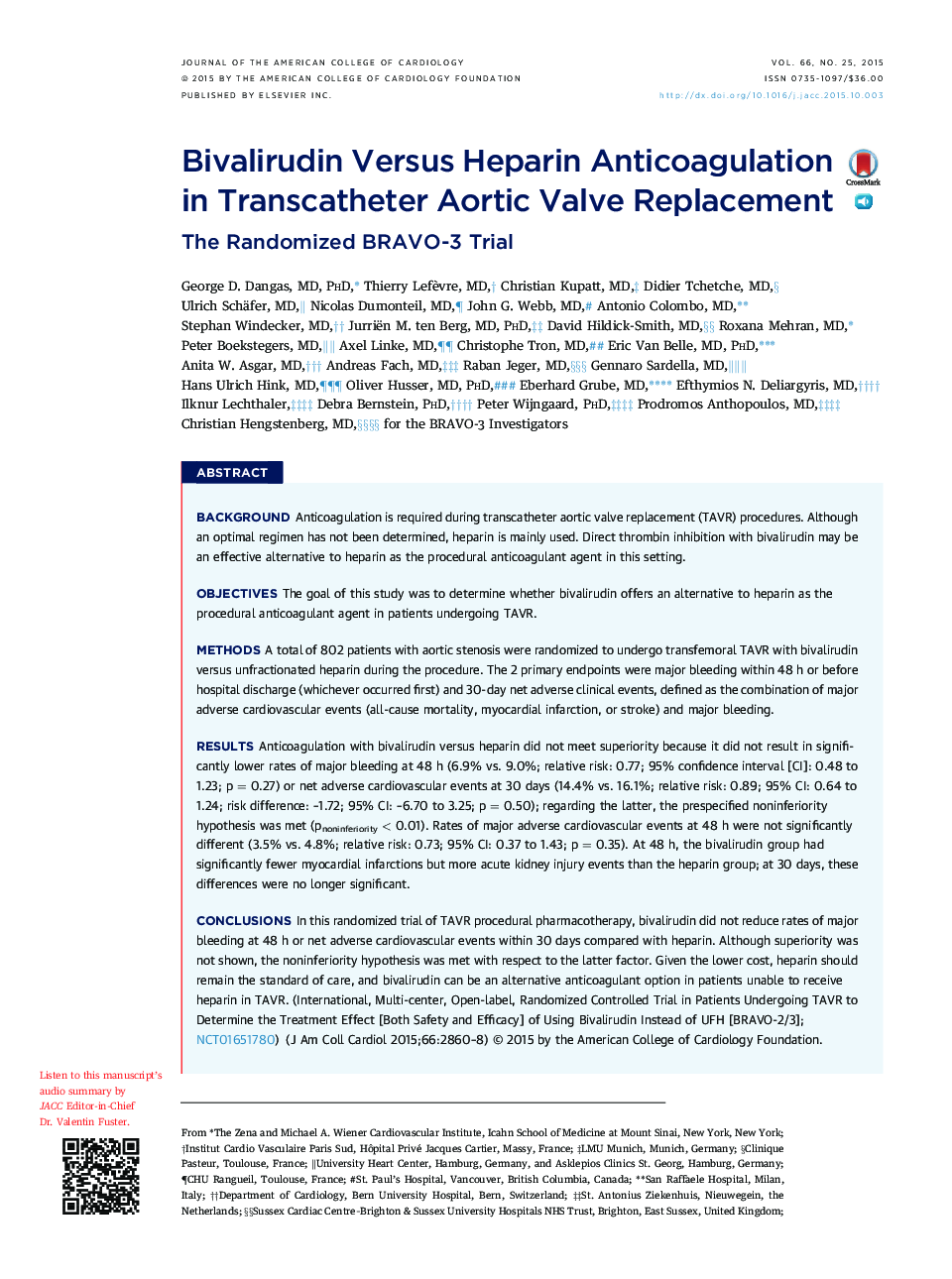| کد مقاله | کد نشریه | سال انتشار | مقاله انگلیسی | نسخه تمام متن |
|---|---|---|---|---|
| 5982208 | 1577014 | 2015 | 9 صفحه PDF | دانلود رایگان |

BackgroundAnticoagulation is required during transcatheter aortic valve replacement (TAVR) procedures. Although an optimal regimen has not been determined, heparin is mainly used. Direct thrombin inhibition with bivalirudin may be an effective alternative to heparin as the procedural anticoagulant agent in this setting.ObjectivesThe goal of this study was to determine whether bivalirudin offers an alternative to heparin as the procedural anticoagulant agent in patients undergoing TAVR.MethodsA total of 802 patients with aortic stenosis were randomized to undergo transfemoral TAVR with bivalirudin versus unfractionated heparin during the procedure. The 2 primary endpoints were major bleeding within 48 h or before hospital discharge (whichever occurred first) and 30-day net adverse clinical events, defined as the combination of major adverse cardiovascular events (all-cause mortality, myocardial infarction, or stroke) and major bleeding.ResultsAnticoagulation with bivalirudin versus heparin did not meet superiority because it did not result in significantly lower rates of major bleeding at 48 h (6.9% vs. 9.0%; relative risk: 0.77; 95% confidence interval [CI]: 0.48 to 1.23; p = 0.27) or net adverse cardiovascular events at 30 days (14.4% vs. 16.1%; relative risk: 0.89; 95% CI: 0.64 to 1.24; risk difference: -1.72; 95% CI: -6.70 to 3.25; p = 0.50); regarding the latter, the prespecified noninferiority hypothesis was met (pnoninferiority < 0.01). Rates of major adverse cardiovascular events at 48 h were not significantly different (3.5% vs. 4.8%; relative risk: 0.73; 95% CI: 0.37 to 1.43; p = 0.35). At 48 h, the bivalirudin group had significantly fewer myocardial infarctions but more acute kidney injury events than the heparin group; at 30 days, these differences were no longer significant.ConclusionsIn this randomized trial of TAVR procedural pharmacotherapy, bivalirudin did not reduce rates of major bleeding at 48 h or net adverse cardiovascular events within 30 days compared with heparin. Although superiority was not shown, the noninferiority hypothesis was met with respect to the latter factor. Given the lower cost, heparin should remain the standard of care, and bivalirudin can be an alternative anticoagulant option in patients unable to receive heparin in TAVR. (International, Multi-center, Open-label, Randomized Controlled Trial in Patients Undergoing TAVR to Determine the Treatment Effect [Both Safety and Efficacy] of Using Bivalirudin Instead of UFH [BRAVO-2/3]; NCT01651780)
Journal: Journal of the American College of Cardiology - Volume 66, Issue 25, 29 December 2015, Pages 2860-2868